– UNDER THE TONGUE TREATMENTS FOR ALLERGY
Long developed and used in Europe as well as Canada, the United States has only recently had sublingual immunotherapy(SLIT) commercially available. Ragweed(pollen) was the first allergen to be approved by the Food and Drug Administration(US) followed by Grass(pollen). All of the these pollen based tablets are used under the tongue and except for the initial dose(which is typically given in the doctor’s office), is given at home. Grass pollen SLIT tablets have been manufactured by 2 different companies(Merck & Greer). The wafer like, self-dissolving tablet is placed under the tongue and the patient is asked not to swallow the tablets/secretions for about 5 minutes. Ragweed pollen sensitivity typically manifests as fall symptoms often starting around Labor Day, whereas grass pollen sensitivity peaks in the summer. These treatments are popular as they do not require injections. While grass pollen allergy predominates in the Midwest, in the Northeast tree pollen is the most prevalent seasonal allergy. Several tree pollens are responsible for symptoms including the main 3, oak, birch and maple. Sublingual tablets are not commercially available for tree pollen allergy in the United States. Other year round allergens include dander(cat and dog) and dust mite. Sublingual tablets are also not commercially available for these allergens.
Studies have shown that sublingual immunotherapy requires much more source material than regular allergy shots. Specialists in the United States have used allergen extracts made for injection and provided them to patients as drops for patients to use sublingually. As these extracts were not prepared for oral use, this is considered “off-label” use. Furthermore health insurance plans do not reimburse for the costs of these extracts used in this manner. This means that patients have to pay out of pocket for these extracts usually provided in dropper vials. One advantage of sublingual immunotherapy is that 2-3 month supplies can be dispensed for a lower cost than that of a whole year’s supply. So patients can assess the efficacy before committing a larger purchase.
Preseasonal treatment with sublingual immunotherapy is typical and it is continued throughout the pollen season as well. For grass, starting treatment by February is advised. For ragweed treatment by May is advised. For year round allergies such as for dander and dust mite, treatment is given continuously. Pollen sublingual immunotherapy can also be given throughout the year, and when given in this manner, a more durable desensitized state can be achieved.
Sublingual Allergen Desensitization Frequently Asked Questions
Are Allergy Shots More Effective Than Sublingual Immunotherapy?
Allergy shots are FDA approved for most allergens and can include multiple allergens in one shot. This means your treatment may work faster than oral immunotherapy. However, consult with an allergist to determine which treatment is best for you.
How Do I Store Sublingual Drops?
The treatment vials contain a glycerin preservative, which helps maintain stability at room temperature for weeks. However, it is best to keep your vials refrigerated to ensure maximum potency.
How Long Does it Take for Sublingual Immunotherapy to Work?
The average time is 3-6 months to start building immunity to specific allergens. However, it may take up to a year in some patients.
How Long Must A Patient Continue SLIT?
We recommend that patients continue SLIT for three to five years so that the body will build up a lasting immunity. Some patients may have to return to sublingual immunotherapy treatment later in life to build immunity again.
Is Sublingual Allergen Desensitization Covered By Insurance?
Some insurance plans cover this treatment. We recommend contacting your insurance company before scheduling an appointment with an allergy specialist.
Is Sublingual Immunotherapy Safe?
Clinical trials and surveys published over at least 20 years show that SLIT is relatively safe and effective for the treatment of rhinitis and asthma.
Is There Sublingual Immunotherapy For Food Allergies?
The only FDA-approved oral immunotherapy treatment for food allergies is PALFORZIA, which treats peanut allergies in pediatric patients. The medication is a powder made from peanuts. A child is given small amounts of the powder over several months, and the doses are gradually increased.
What Allergens Does Sublingual Immunotherapy Treat?
Sublingual immunotherapy is FDA approved for ragweed pollen, grass pollen, dust mites, and peanuts.
What Are the Side Effects of Sublingual Allergen Desensitization?
Common side effects of sublingual allergen desensitization include throat irritation, itching, or mild swelling in the mouth. You may also experience fatigue.
What Is Sublingual Allergen Desensitization?
Sublingual allergen desensitization, also known as sublingual immunotherapy or oral immunotherapy, is an alternative approach to treating allergies without using injections. It works by providing a person with tablets of what they're allergic to, in the hopes to increase tolerance or immunity to the allergens.

